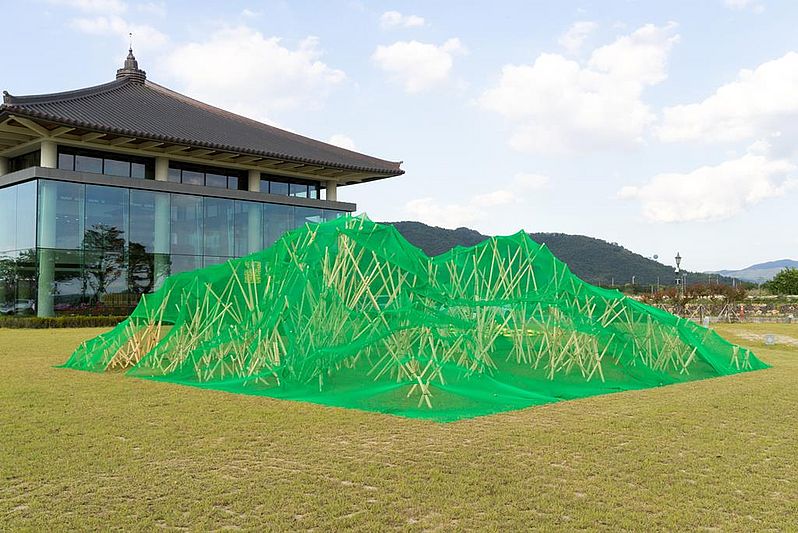
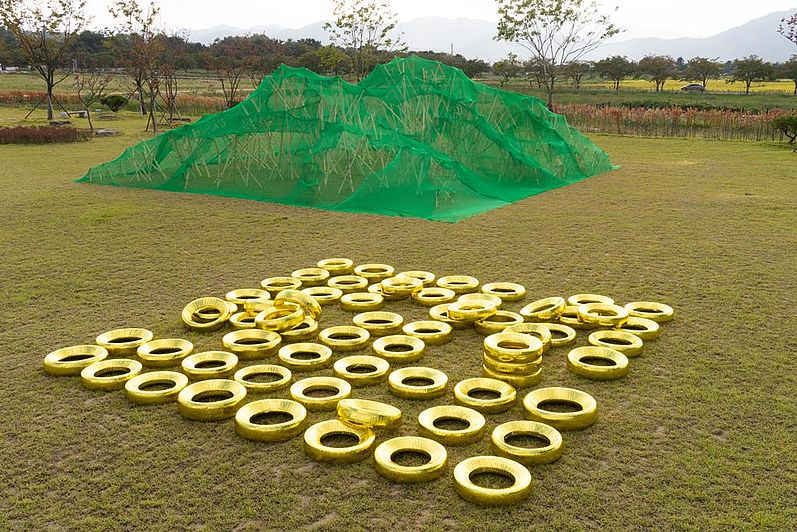
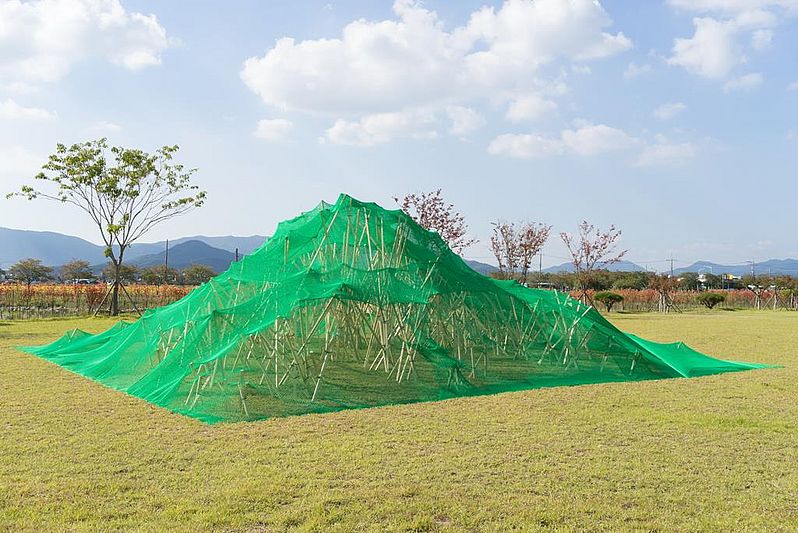
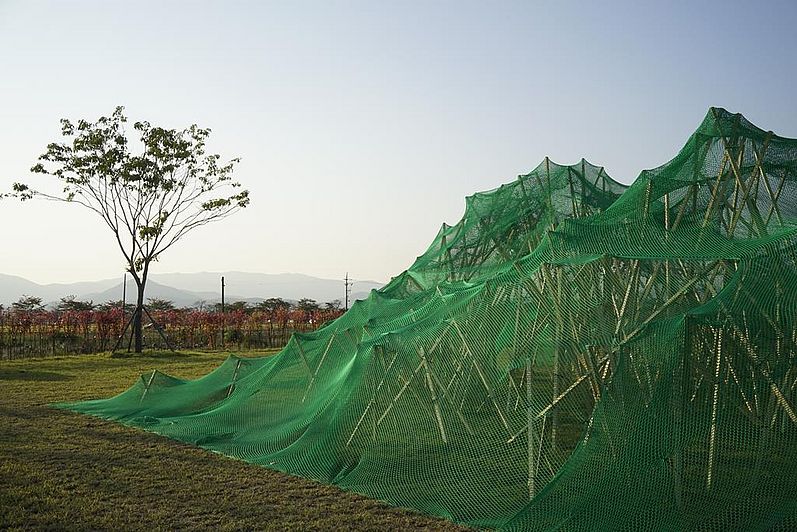
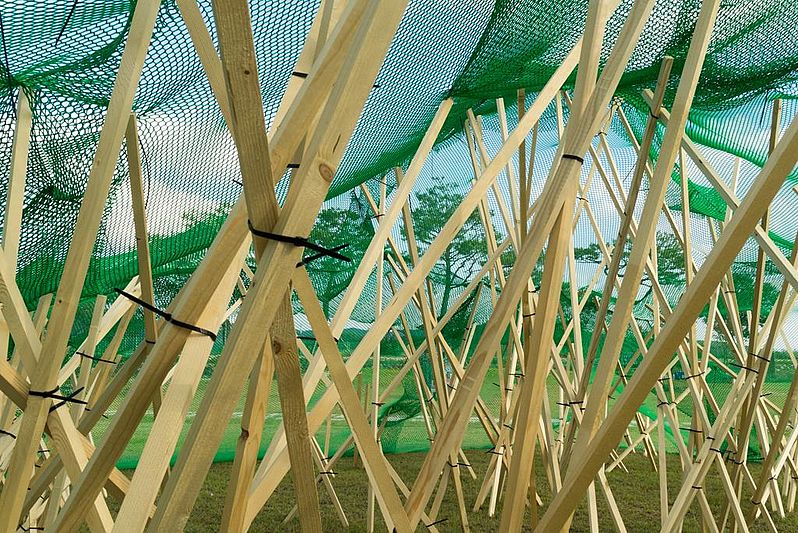
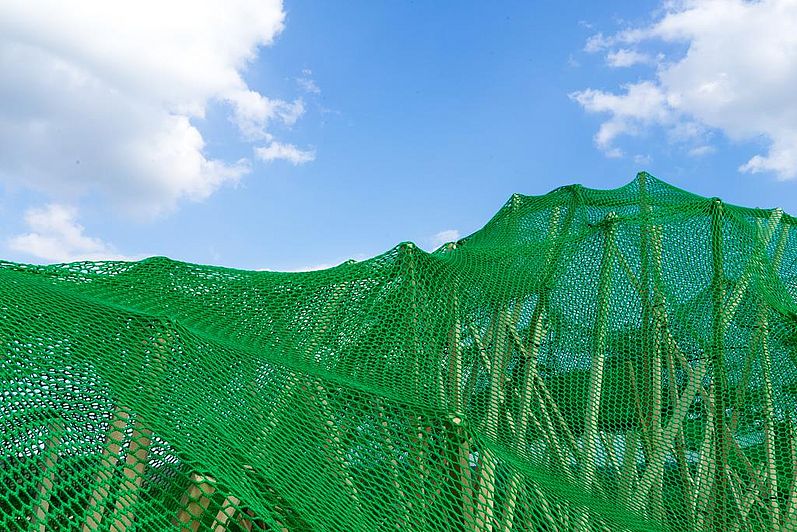
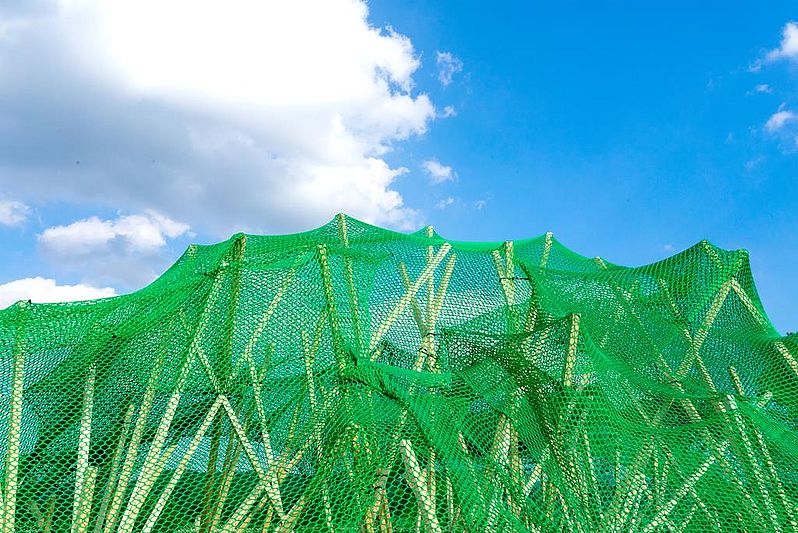
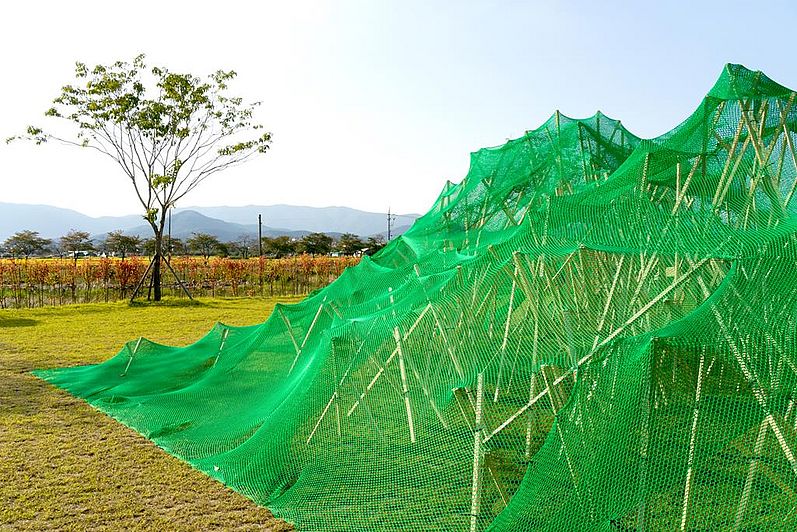
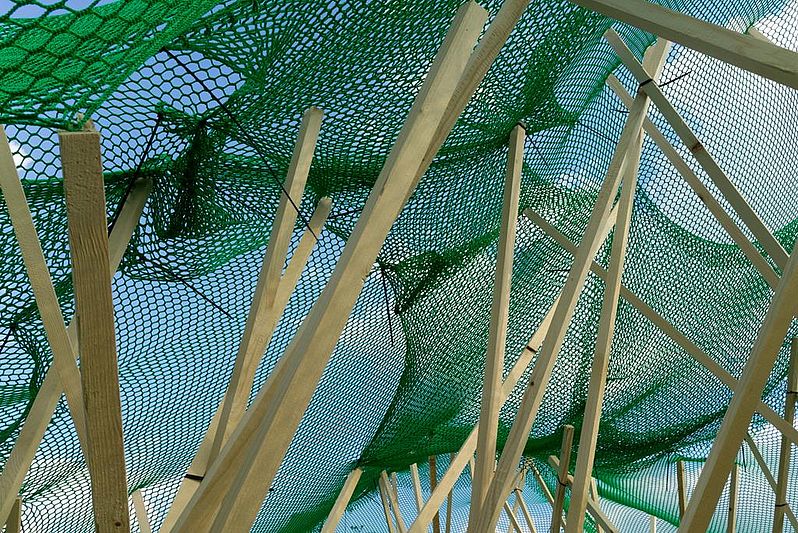
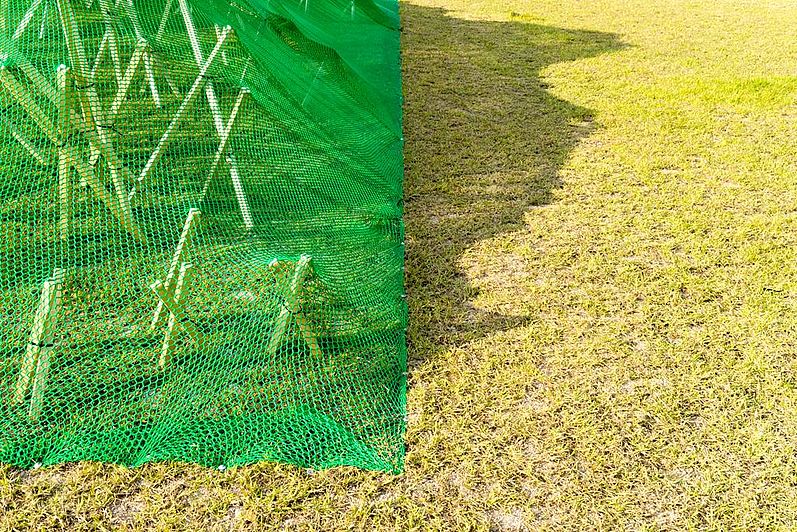
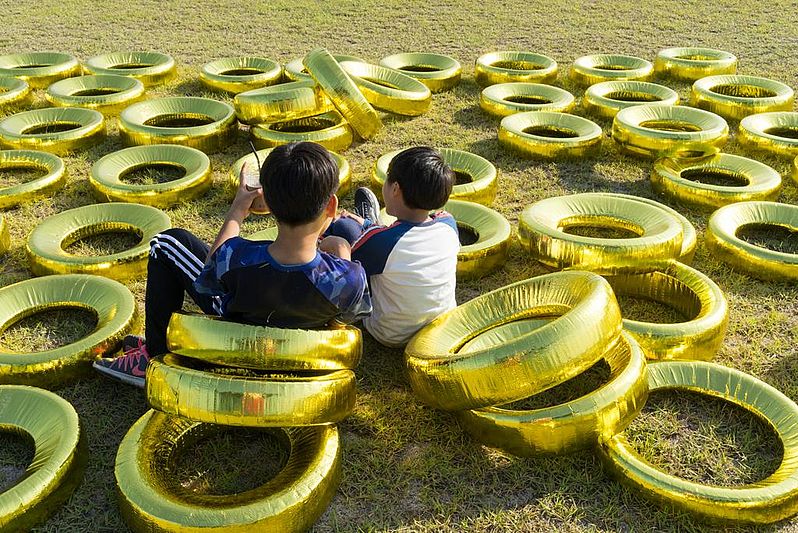
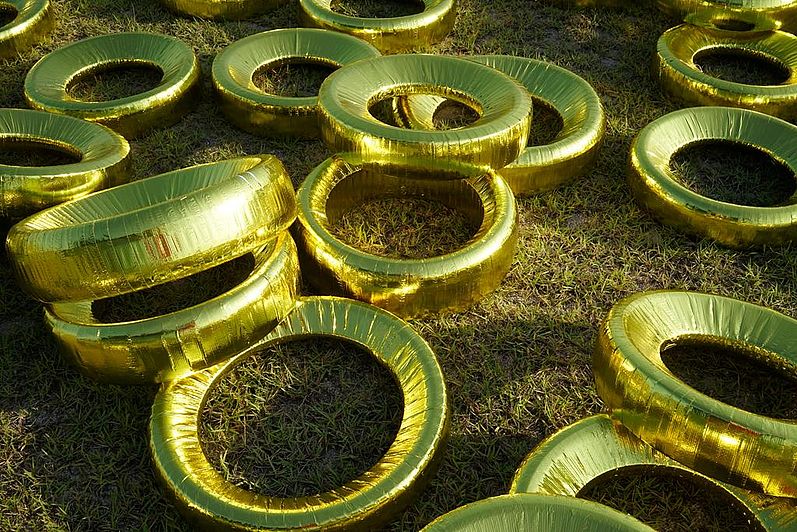
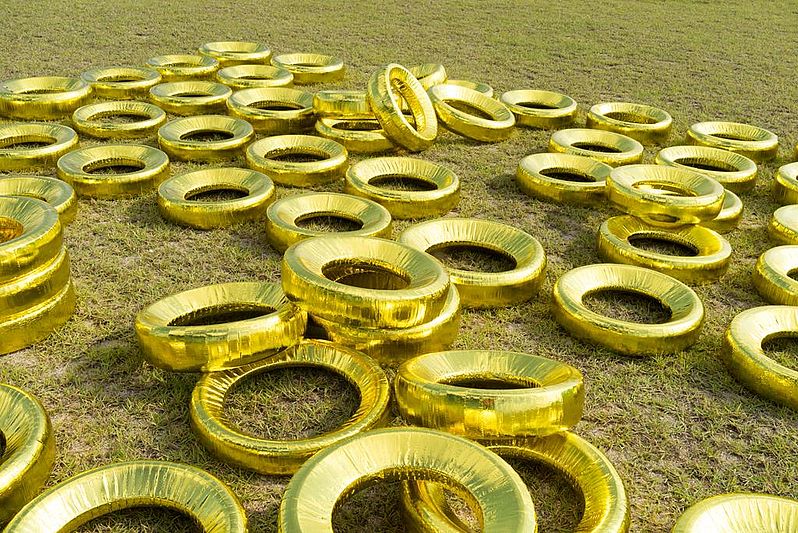
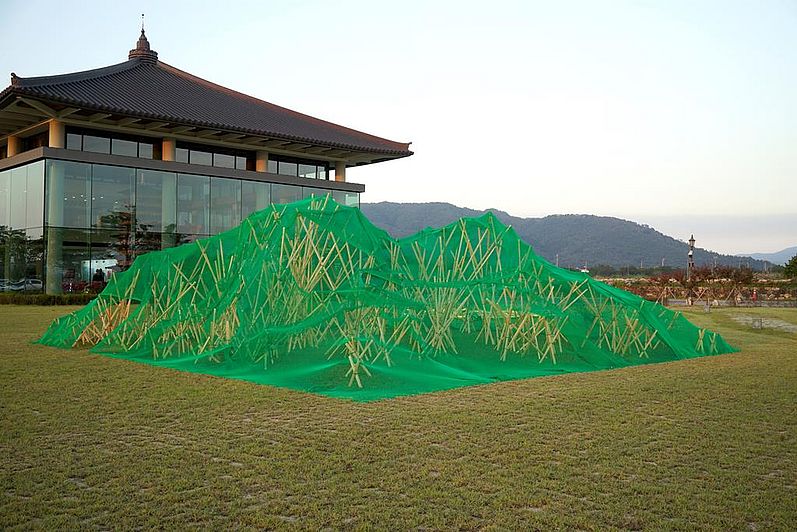
through, Gyeongju International Art Festival, Hwangnyongsaji temple site, Gyeongju, Korea
SANSOO
Auf der Wiese entsteht SANSOO, eine Struktur aus Holzlatten mit einem schillernden durchlässigen Kleid aus grünem Netzgewebe. Die Grundfläche umschreibt ein Quadrat von 11,095m x 11,095m. Dies ist ein Viertel des historischen Tempels Hwangnyongsaji mit 2219cm x 2219cm, der ca. 100m weiter seinen Standort hatte, und das bedeutenste Denkmal von Gyeongju ist.
Die von den Holzlatten getragene dreidimensionale Form verbindet sich mit der dahinterliegenden Bergsilhouette. SANSOO umschreibt eine eigene künstlich hergestellte Landschaft, die viele Assoziationen zulässt. Gerade in Gyeongju mit seinen vielen künstlichen historischen Grabhügeln, die zwischen den Häusern herausragen und den vielen archäologischen Ausgrabungen gibt es eine Verbindung zwischen der künstlerischen Arbeit SANSOO und seiner Umgebung.
Der Titel SANSOO hat im koreanischen eine doppelte Bedeutung, zum einen kann man es mit Sonne und Wasser, sozusagen einer Ideallandschaft übersetzen werden, zum anderen entspricht es auch einer exakten mathematischen Form.
geum
64 in Goldfolie eingewickelte Autoreifen greifen die Grundstruktur des Tempels auf, der auf ehemals 64 Säulen ruhte. geum verweist auf die Historie der ehemals goldene Hauptstadt Koreas mit einem Augenzwinkern. Die Besucher sind eingeladen die Reifen wie Spielsteine zu bewegen.
SANSOO
SANSOO is created on the meadow. The structure is made of wooden slats with a shiny dress made of green netting. The footprint is a square of 11.095m x 11.095m. This is a quarter of the historic Hwangnyongsaji Temple measuring 2219cm x 2219cm, located about 100m away, and is the most significant monument of Gyeongju.
The three-dimensional shape carried by the wooden slats connects to the silhoueted mountain behind. SANSOO illustrates its own man-made landscape, which allows many associations. Gyeongju is especially known for its many artificial historic ancient burial mounds sticking out between houses and the many archaeological excavations. There is a connection between the artistic work SANSOO and its surroundings.
The title SANSOO has a double meaning in Korean. On one hand it can be translated as sun and water that speaks of an ideal landscape while corresponding to an exact mathematical form.
geum
64 car tyres wrapped in gold foil take up the basic structure of the temple, which once rested on 64 columns. geum refers with a wink to the history of the former golden capital of Korea. Visitors are invited to move the tires like playing pieces.